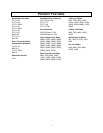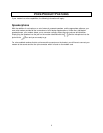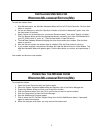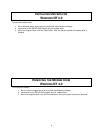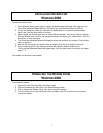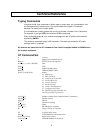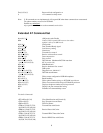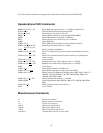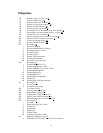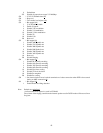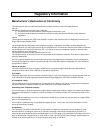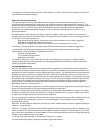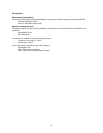14
(The telephone number provided may not be a 900 number or any other umber for which charges exceed local or
long-distance transmission charges.)
Radio and Television Interference
This equipment generates and uses radio frequency energy and if not installed and used properly, in strict
accordance with the manufacturer’s instructions, may cause interference to radio and television reception. The
modem has been tested and found to comply with the limits for a Class B computing device in accordance with the
specifications in Part 15 of FCC rules, which are designed to provide reasonable protection against such
interference in a residential installation. However, there is no guarantee that interference will not occur in a
particular installation.
If this device does cause interference to radio or television reception, which you can determine by monitoring
reception when the modem is installed and when it is removed from the computer, try to correct the problem with
one or more of the following measures:
Reorient the receiving antenna (for televisions with antenna reception only) or cable input device.
Relocate the computer with respect to the receiver.
Relocate the computer and/or the receiver so that they are on separate branch circuits.
If necessary, consult your dealer or an experienced radio/television technician for additional suggestions.
You may find the following booklet, prepared by the Federal Communications Commission, helpful:
How to Identify and Resolve Radio-TV Interference Problems
Stock No. 004-000-0345-4
U.S. Government Printing Office
Washington, DC 20402
In accordance with Part 15 of the FCC rules, the user is cautioned that any changes or modifications to the
equipment described in this manual that are not expressly approved by the manufacturer could void the user’s
authority to operate the equipment.
For Canadian Modem Users
NOTICE: The Industry Canada (IC) label identifies certified equipment. This certification means the equipment
meets certain telecommunications network protective, operational, and safety requirements as prescribed in the
appropriate Terminal Equipment Technical Requirements document(s). The Department does not guarantee the
equipment will operate to the user’s satisfaction. Before installing this equipment, users should ensure that it is
permissible to be connected to the facilities of the local telecommunications company. The equipment must also
be installed using an acceptable method of connection. In some cases, the company’s inside wiring associated
with a single-line, individual service may be extended by means of a certified connector assembly (telephone
extension cord.) The customer should be aware that compliance with the above conditions may not prevent
degradation of service in some situations.
Currently, telecommunication companies do not allow users to connect their equipment to jacks except in precise
situations that are spelled out in tariffing arrangements with those companies.
Repairs to certified equipment should be coordinated by a representative designated by the supplier. Any repairs
or alterations made by the user to this equipment, or equipment malfunctions, may give the telecommunications
company cause to request the user to disconnect the equipment.
For your own protection, make sure that the electrical ground connections of the power utility, telephone lines, and
internal metallic water pipe system, if present, are connected together. This precaution may be particularly
important in rural areas.
CAUTION: Do NOT attempt to make such connections yourself. Instead contact the electric inspection authority or
electrician, as appropriate.
“NOTICE: The Ringer Equivalence Number (REN) assigned to each terminal device provides an indication of the
maximum number of terminals allowed to be connected to a telephone interface. The termination on an interface
may consist of any combination of devices subject only to the requirement that the sum of the Ringer Equivalence
Numbers of all the devices does not exceed 5.”
The Ringer Equivalence Number is located on the modem’s circuit board.
For service and repair issues, contact your computer system manufacturer.




